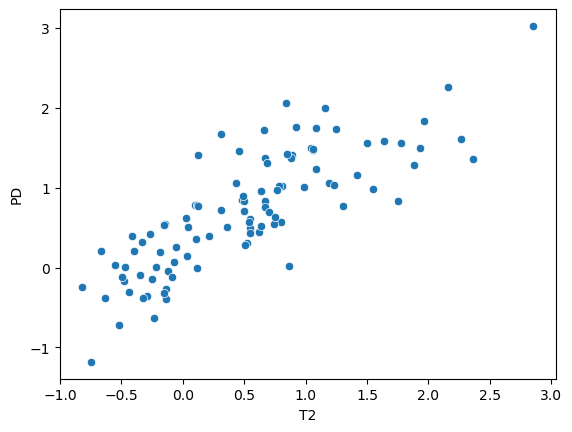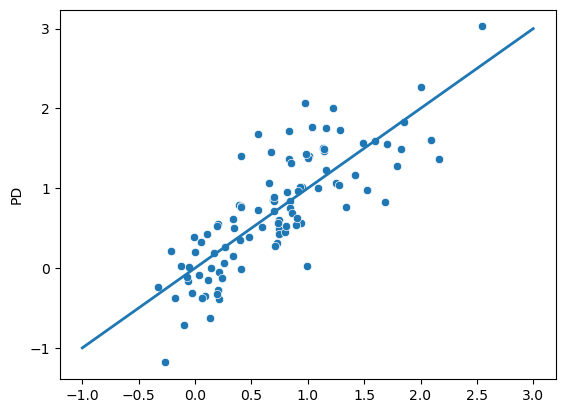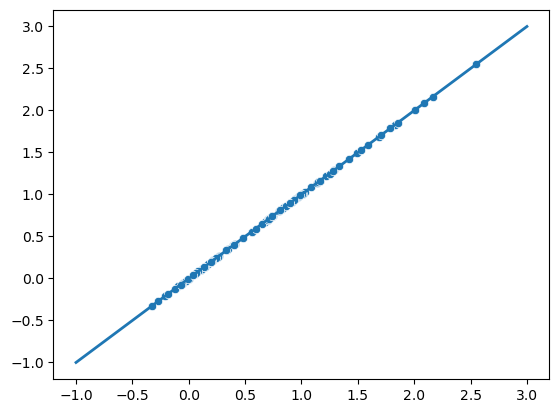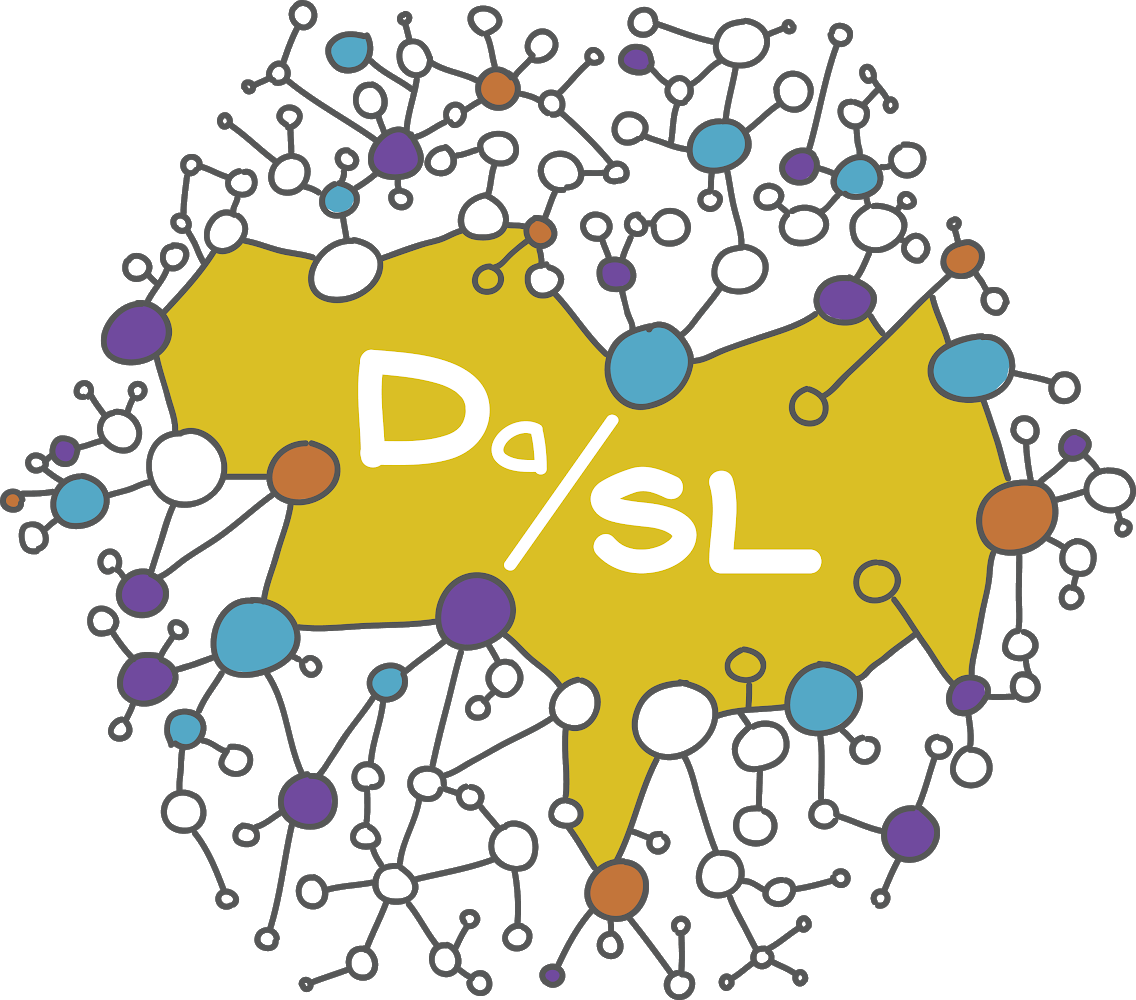Basic regression in pytorch#
import pandas as pd
import torch
import statsmodels.formula.api as smf
import statsmodels as sm
import seaborn as sns
import matplotlib.pyplot as plt
## Read in the data and display a few rows
dat = pd.read_csv("https://raw.githubusercontent.com/bcaffo/ds4bme_intro/master/data/oasis.csv")
dat.head(4)
| FLAIR | PD | T1 | T2 | FLAIR_10 | PD_10 | T1_10 | T2_10 | FLAIR_20 | PD_20 | T1_20 | T2_20 | GOLD_Lesions | |
|---|---|---|---|---|---|---|---|---|---|---|---|---|---|
| 0 | 1.143692 | 1.586219 | -0.799859 | 1.634467 | 0.437568 | 0.823800 | -0.002059 | 0.573663 | 0.279832 | 0.548341 | 0.219136 | 0.298662 | 0 |
| 1 | 1.652552 | 1.766672 | -1.250992 | 0.921230 | 0.663037 | 0.880250 | -0.422060 | 0.542597 | 0.422182 | 0.549711 | 0.061573 | 0.280972 | 0 |
| 2 | 1.036099 | 0.262042 | -0.858565 | -0.058211 | -0.044280 | -0.308569 | 0.014766 | -0.256075 | -0.136532 | -0.350905 | 0.020673 | -0.259914 | 0 |
| 3 | 1.037692 | 0.011104 | -1.228796 | -0.470222 | -0.013971 | -0.000498 | -0.395575 | -0.221900 | 0.000807 | -0.003085 | -0.193249 | -0.139284 | 0 |
sns.scatterplot(x = dat['T2'], y = dat['PD'])
<Axes: xlabel='T2', ylabel='PD'>

fit = smf.ols('PD ~ T2', data = dat).fit()
fit.summary()
| Dep. Variable: | PD | R-squared: | 0.661 |
|---|---|---|---|
| Model: | OLS | Adj. R-squared: | 0.657 |
| Method: | Least Squares | F-statistic: | 190.9 |
| Date: | Mon, 29 Jan 2024 | Prob (F-statistic): | 9.77e-25 |
| Time: | 07:02:58 | Log-Likelihood: | -57.347 |
| No. Observations: | 100 | AIC: | 118.7 |
| Df Residuals: | 98 | BIC: | 123.9 |
| Df Model: | 1 | ||
| Covariance Type: | nonrobust |
| coef | std err | t | P>|t| | [0.025 | 0.975] | |
|---|---|---|---|---|---|---|
| Intercept | 0.3138 | 0.052 | 6.010 | 0.000 | 0.210 | 0.417 |
| T2 | 0.7832 | 0.057 | 13.815 | 0.000 | 0.671 | 0.896 |
| Omnibus: | 1.171 | Durbin-Watson: | 1.501 |
|---|---|---|---|
| Prob(Omnibus): | 0.557 | Jarque-Bera (JB): | 0.972 |
| Skew: | 0.241 | Prob(JB): | 0.615 |
| Kurtosis: | 2.995 | Cond. No. | 1.89 |
Notes:
[1] Standard Errors assume that the covariance matrix of the errors is correctly specified.
# The in sample predictions
yhat = fit.predict(dat['T2'])
# Make sure that it's adding the intercept
#test = 0.3138 + dat['T2'] * 0.7832
#sns.scatterplot(yhat,test)
## A plot of the in sample predicted values
## versus the actual outcomes
sns.scatterplot(x = yhat, y = dat['PD'])
plt.plot([-1, 3], [-1, 3], linewidth=2)
[<matplotlib.lines.Line2D at 0x783ee16ecca0>]

n = dat.shape[0]
## Get the y and x from
xtraining = torch.from_numpy(dat['T2'].values)
ytraining = torch.from_numpy(dat['PD'].values)
## PT wants floats
xtraining = xtraining.float()
ytraining = ytraining.float()
## Dimension is 1xn not nx1
## squeeze the second dimension
xtraining = xtraining.unsqueeze(1)
ytraining = ytraining.unsqueeze(1)
## Show that everything is the right size
[xtraining.shape,
ytraining.shape,
[n, 1]
]
[torch.Size([100, 1]), torch.Size([100, 1]), [100, 1]]
## Show that linear regression is a pytorch
model = torch.nn.Sequential(
torch.nn.Linear(1, 1)
)
## MSE is the loss function
loss_fn = torch.nn.MSELoss(reduction='sum')
## Set the optimizer
## There are lots of choices
optimizer = torch.optim.SGD(model.parameters(), lr=1e-4)
## Loop over iterations
for t in range(10000):
## Forward propagation
y_pred = model(xtraining)
## the loss for this interation
loss = loss_fn(y_pred, ytraining)
#print(t, loss.item() / n)
## Zero out the gradients before adding them up
optimizer.zero_grad()
## Backprop
loss.backward()
## Optimization step
optimizer.step()
ytest = model(xtraining).detach().numpy().reshape(-1)
sns.scatterplot(x = ytest, y = yhat)
plt.plot([-1, 3], [-1, 3], linewidth=2)
[<matplotlib.lines.Line2D at 0x783ee986a710>]

for param in model.parameters():
print(param.data)
tensor([[0.7831]])
tensor([0.3138])
